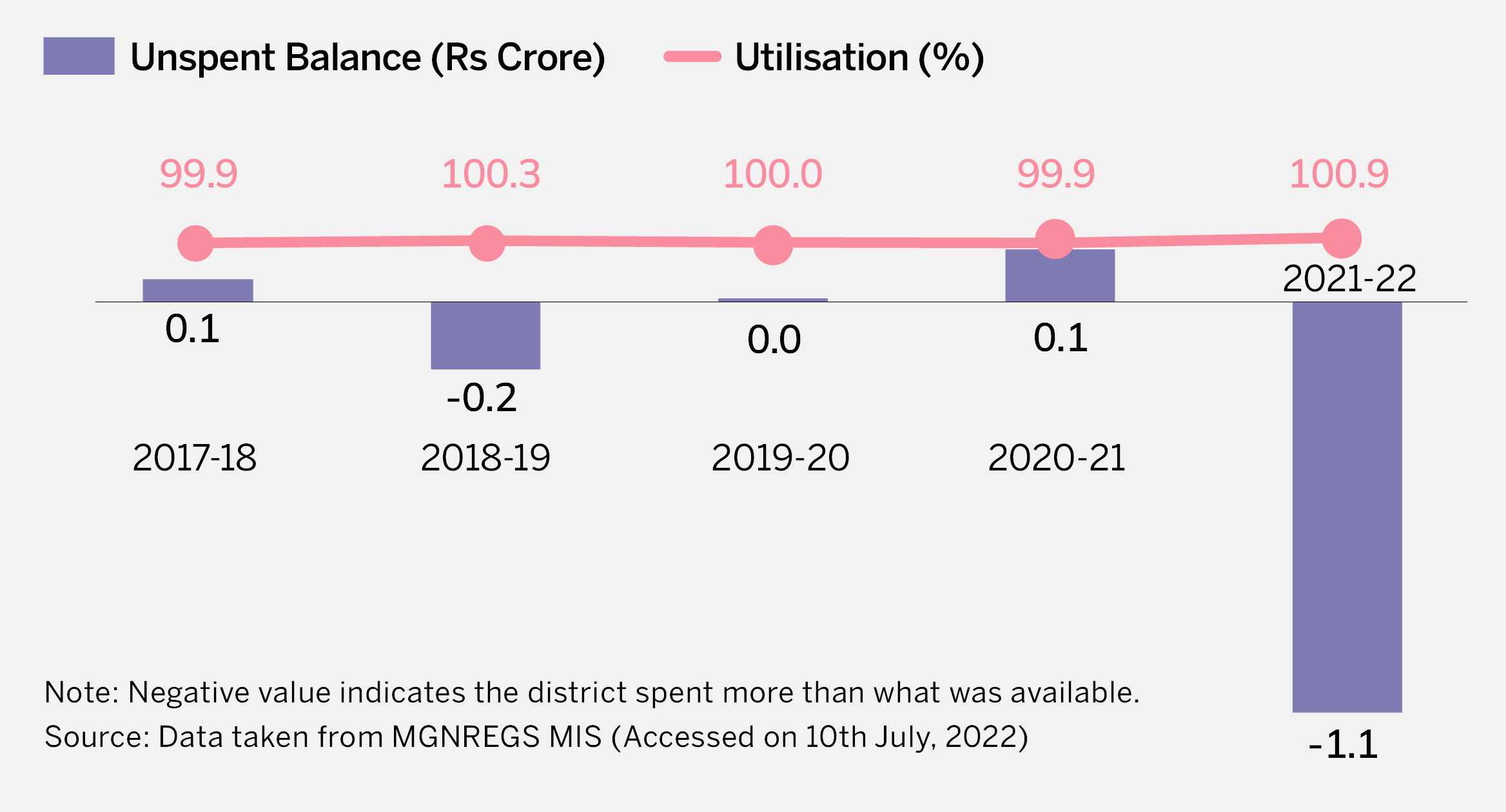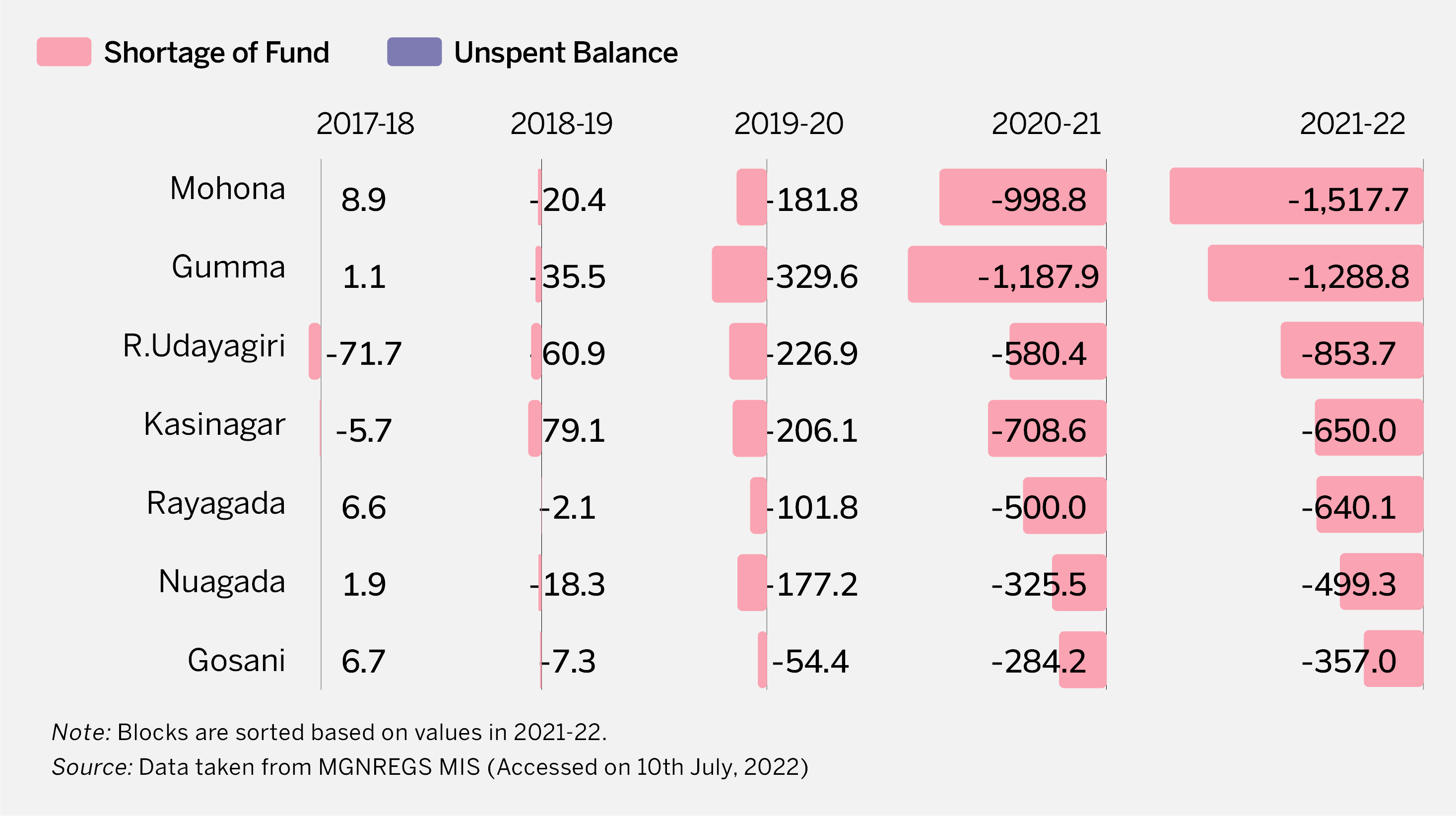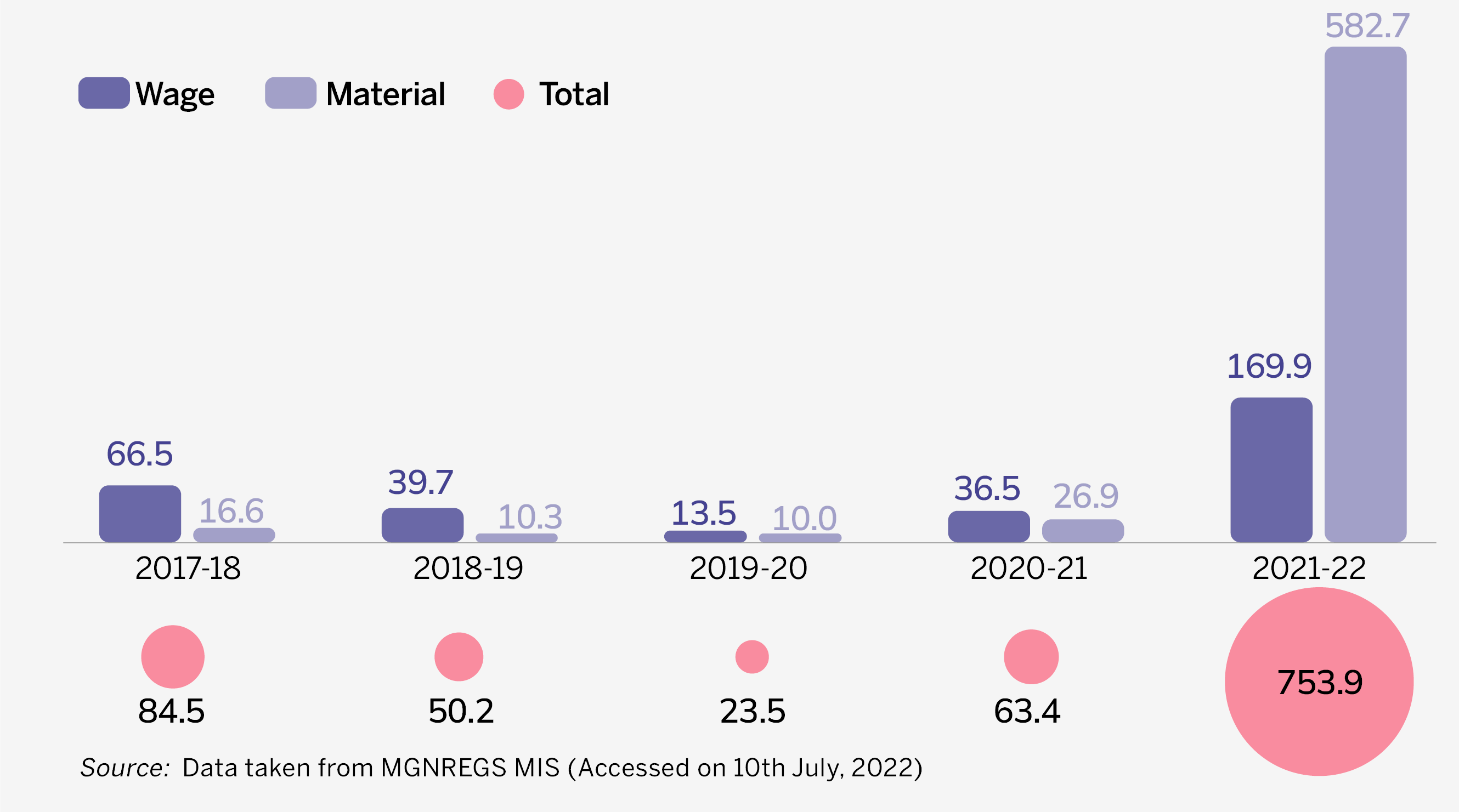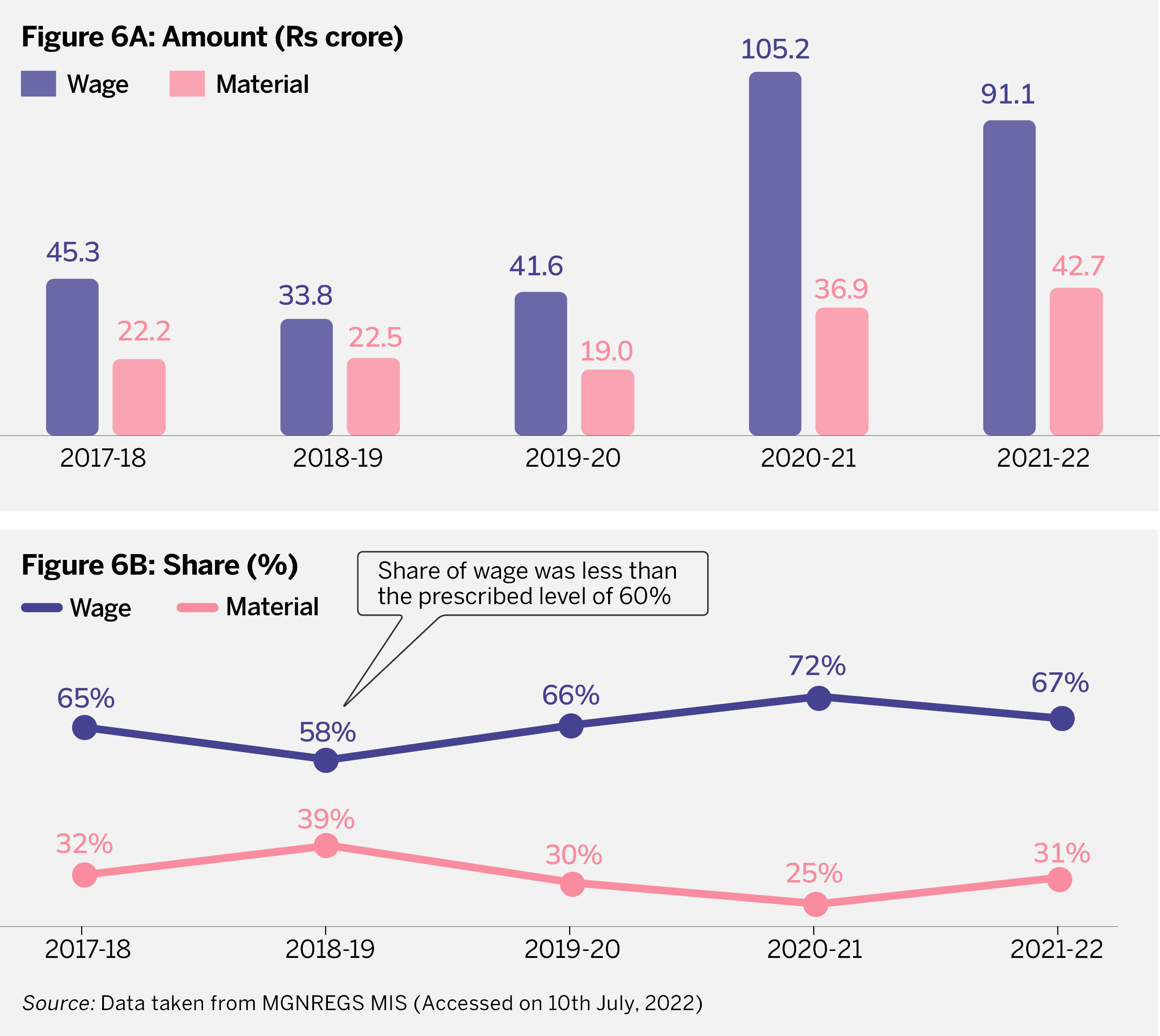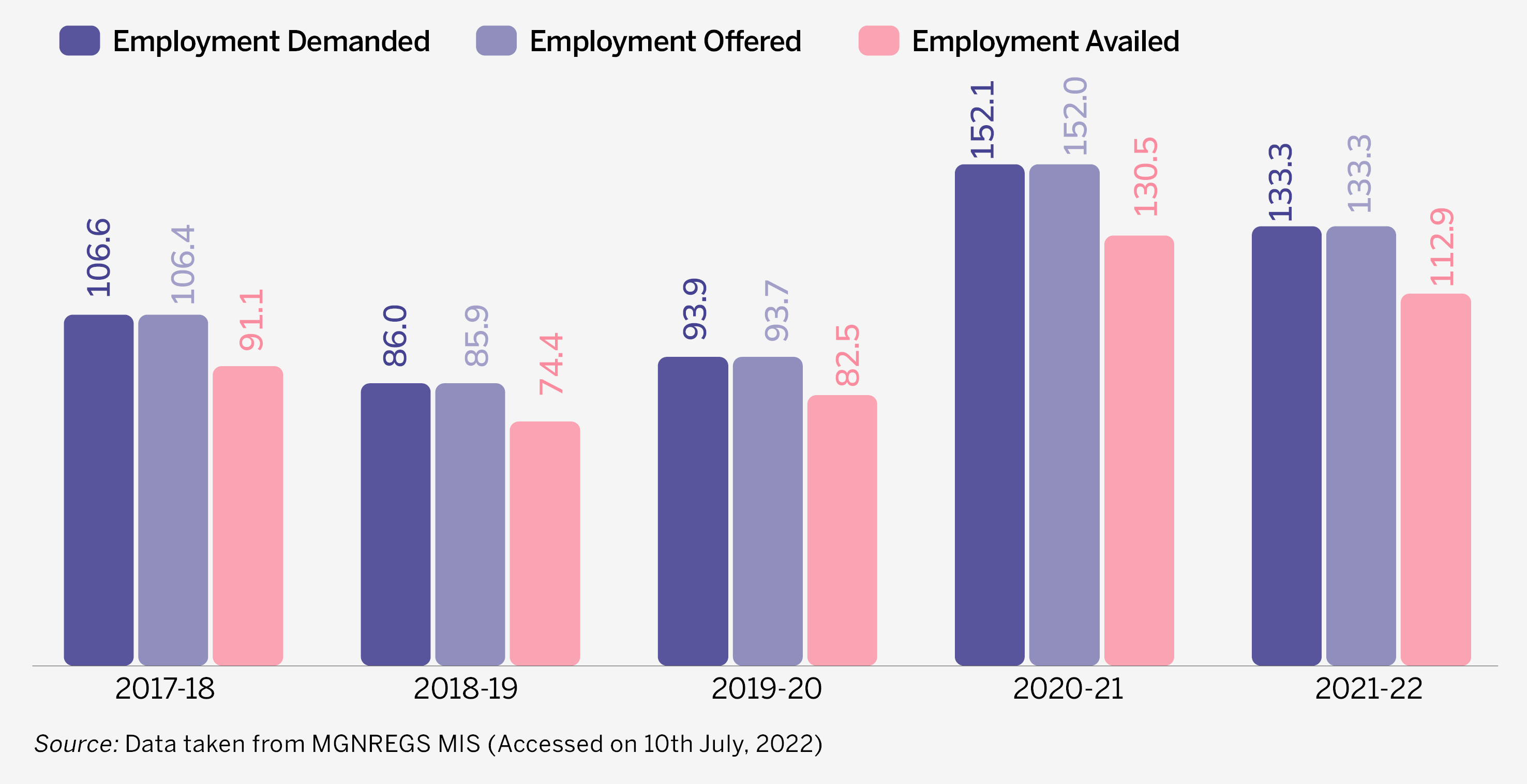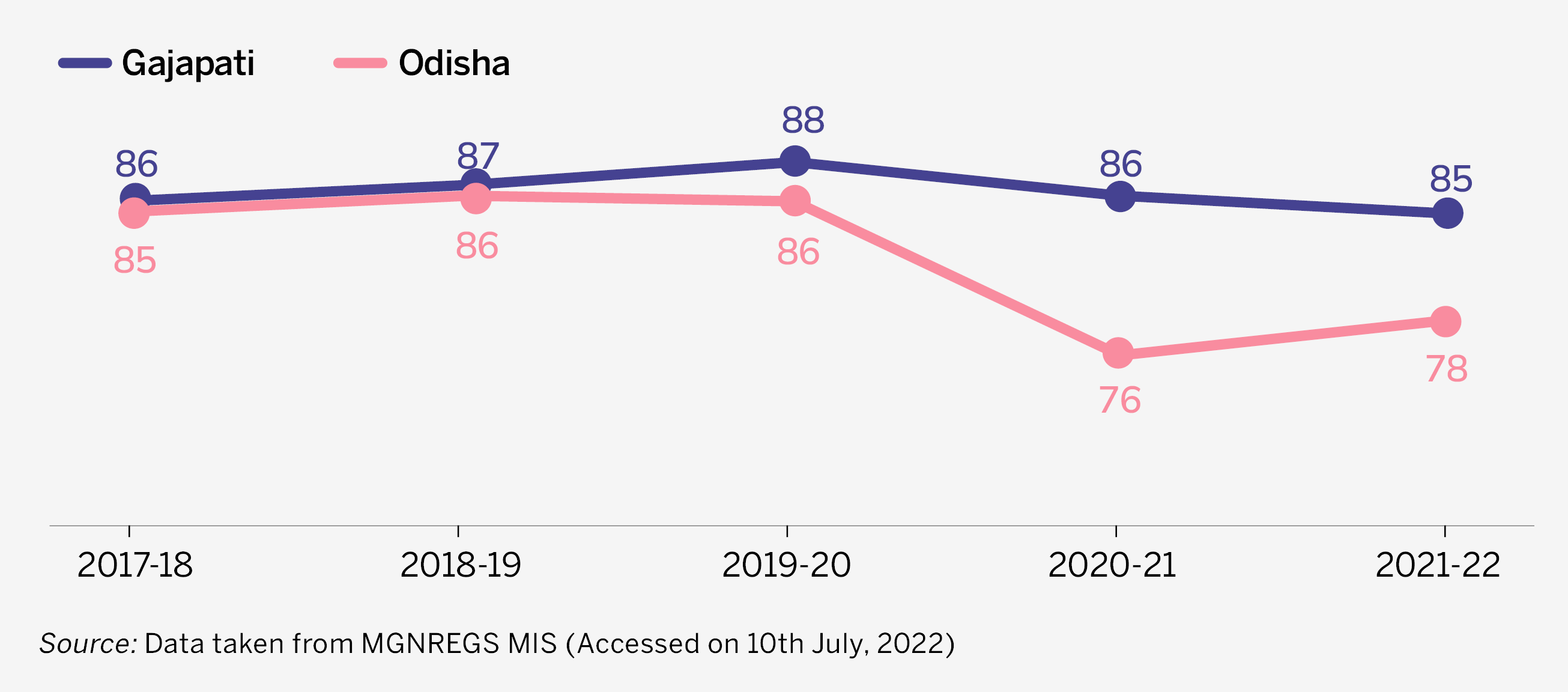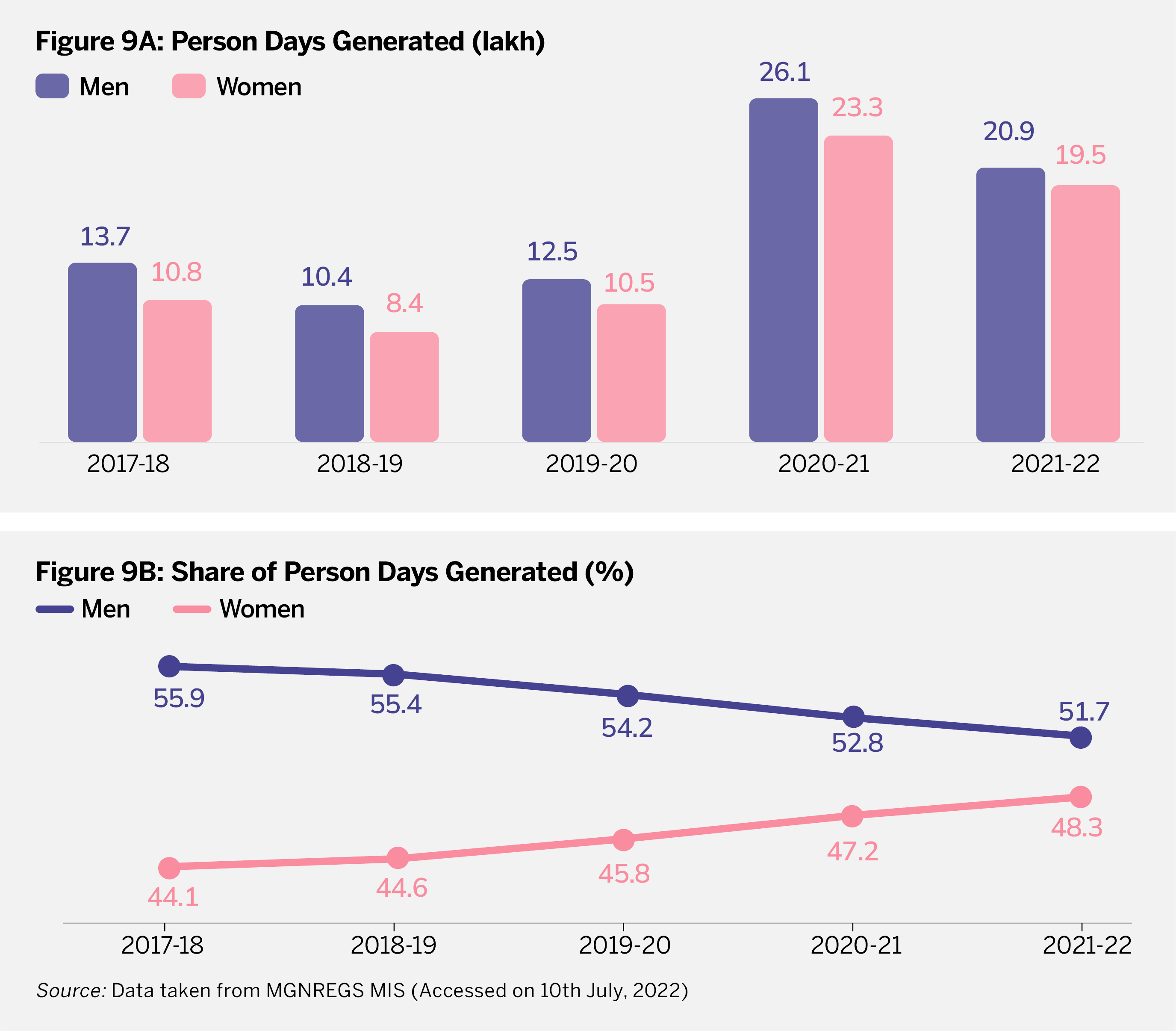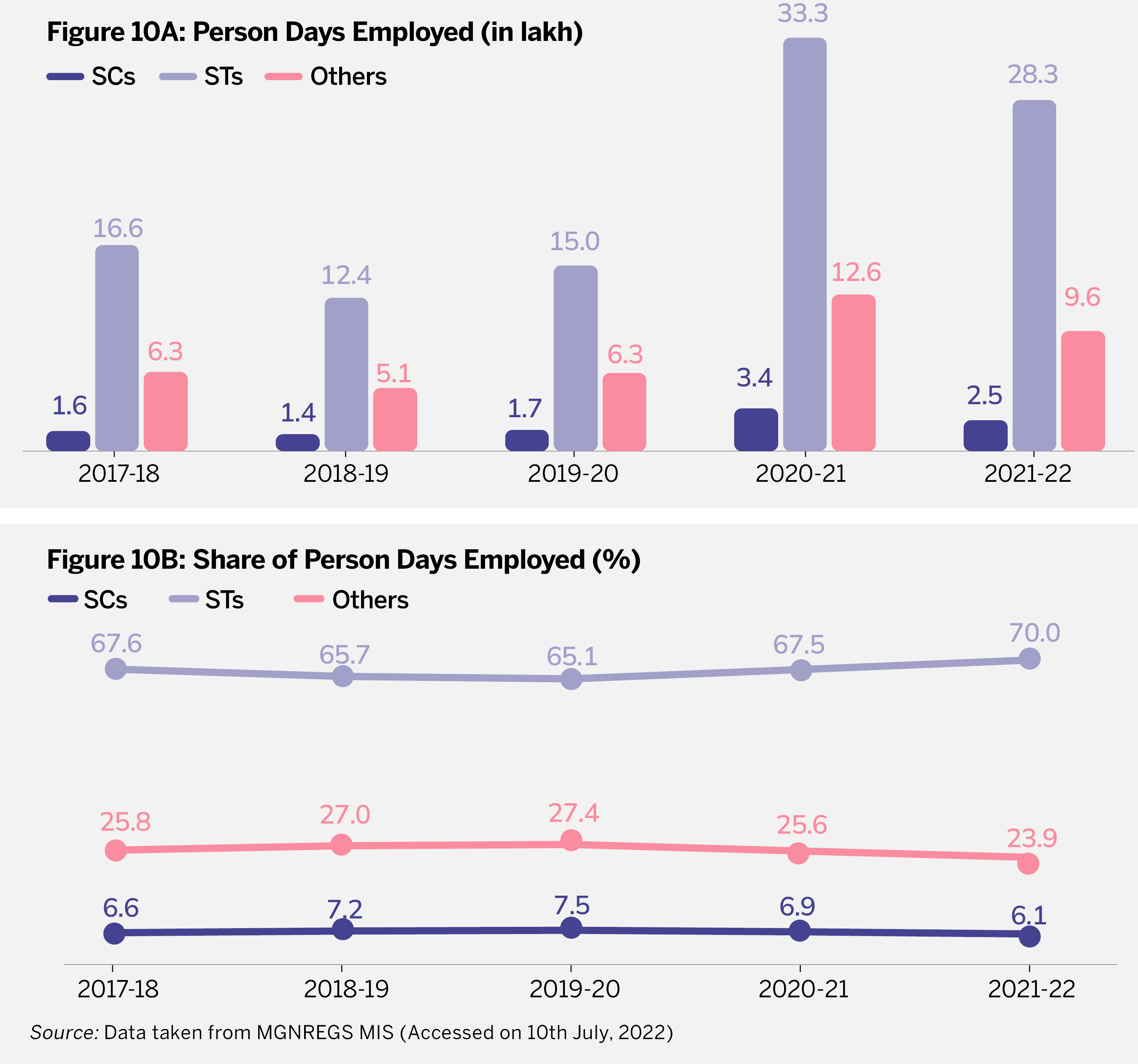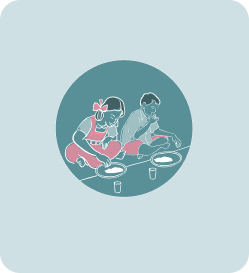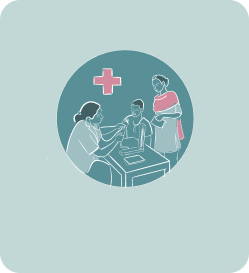01.
How Much Funds Were Made Available and How Much Was Spent?
Section titled How Much Funds Were Made Available and How Much Was Spent?Funds are made available to districts based on employment demand and the need for material. Figure 1 presents the trend of fund available and the expenditure incurred under MGNREGS in Gajapati.
Figure 1: Fund Available and Expenditure (Rs Crore)
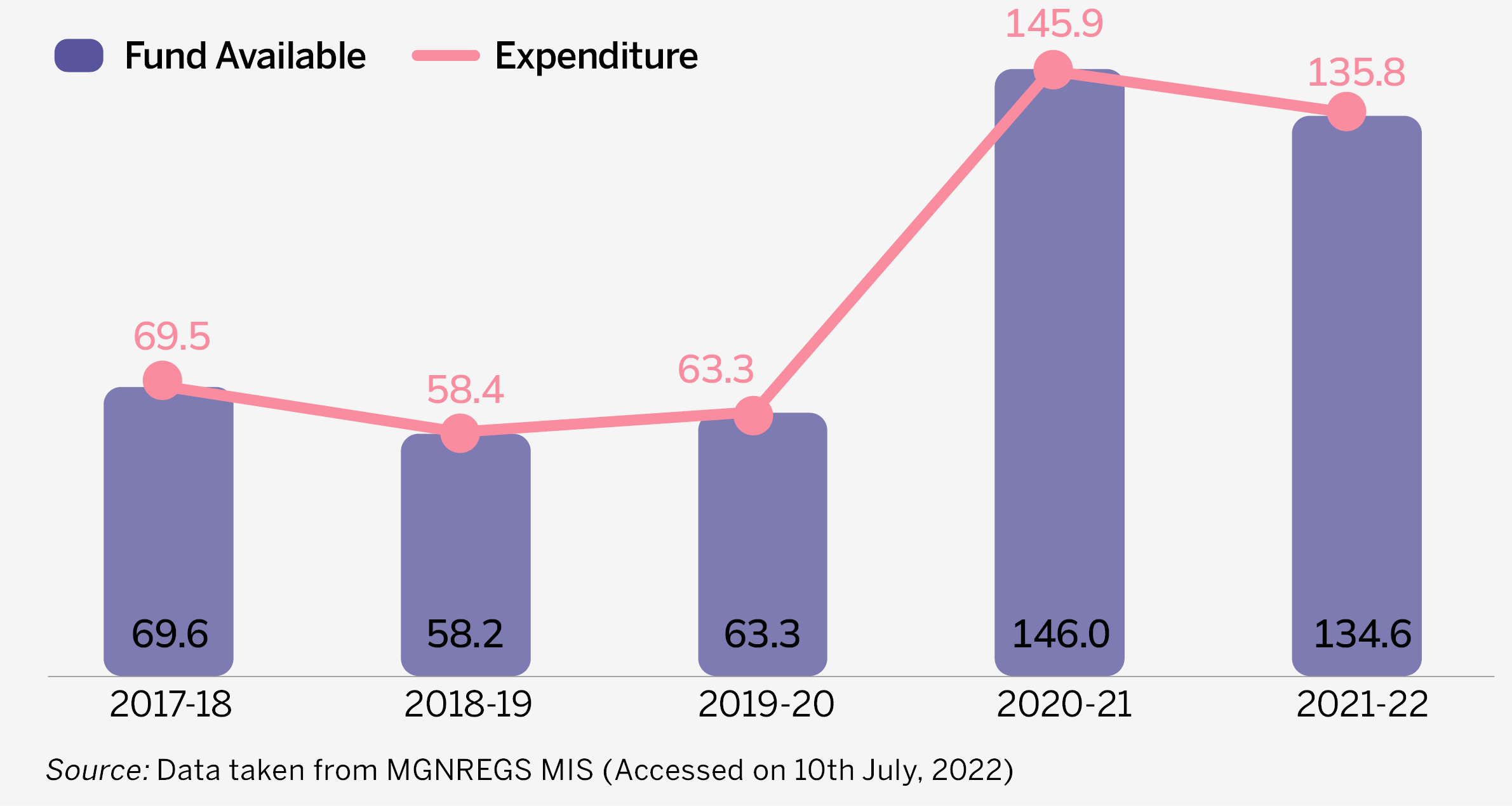
- Between 2017-18 and 2019-20, total funds available and total expenditure saw marginal changes.
- In 2020-21, both funds available and expenditure more than doubled compared to 2019-20, reflecting the increased demand for work in the backdrop of the COVID-19 induced economic slowdown.
- In 2021-22, the second year of the pandemic, both fund availability and expenditure fell by 8% and 7%, respectively.
Figure 2 shows the sum of funds available and expenditure for the years between 2017-18 and 2021-22 in Gajapati’s seven blocks.
Figure 2: Cumulative Fund Available and Expenditure Between 2017-18 and 2021-22 (Rs Crore)

- The largest amount of funds available and expenditure in this period have been in Mohona and Nuagada, while the lowest has been in Gosani and Kasinagar.
- Between 2017-18 and 2021-22, cumulative expenditure exceeded cumulative funds available in all seven blocks.
